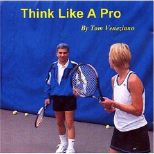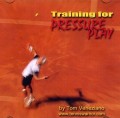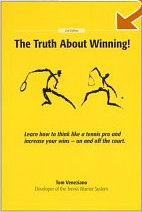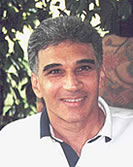For years I have used the principle of repetition to teach players how to master strokes. Repetition is a principle of learning that is much misunderstood in a world of 'quick fix' and 'shortcut' learning methods. Repetition means hard work, intense practice and many hours on the court. Who wants to do that? Answer: The best!
But what exactly do I mean by repetition? Do you take each and every intricate technical mechanic involved in a tennis stroke, hit thousands of balls, master that technique and then go on to the next technique? And after you have mastered that technique, go on to another? And another and another? I'm convinced that this is the way most players believe the top pros have learned to be the best -- by meticulously and painstakingly working themselves through every intricate part of their game.
If this is what you believe, let me set the record straight. Do you really think you can get a child to practice all of this intricate stuff day after day until it is perfect, then move on to the next technique? You would have to follow that kid around and badger him (or her) to death every moment he was on the court. And even if you could follow him and badger him constantly, he still would not be able to perform each and every move to become a great player. IT'S IMPOSSIBLE!
The reason why you believe this learning model is because that is all you read about in tennis books, magazines, videos, etc., so you think it must be true. Even most television tennis analysts give you the same impression.
When Rafael Nadal was asked who he modeled his game after, he replied, "I never thought like that. I just played the way I was comfortable playing."
Played the way he was comfortable playing! I wonder what tennis book he learned that technique from?
WHAT REPETITION TRULY MEANS
Learning each and every intricate mechanical move is not what I mean when I say, "Repetition is the chariot of genius."
Repetition is the art of doing what you enjoy so much that what you are learning begins to teach you. That is exactly what geniuses have done. They have immersed themselves in a given field so much that the process not only teaches them, but they create new ways of execution within that field. In tennis we have Borg, Graf, Connors, Evert, Laver, Williams, and Federer -- all tennis geniuses who have brought exciting new styles to the game of tennis.
To learn a stroke you find one or two procedures for a given stroke and work on them relentlessly, allowing the rest of the intricate stroke mechanics to be molded by the process. Here is how it works. This may be a little technical, but you will get the sense of it.
Let's say you are working on a backhand. The two procedures that I use are (1) Coil up the shoulders and uncoil, and (2) Swing low to high. Then you execute these procedures hundreds of times each week. Each time you perform this action the brain subconsciously goes out and collects data from your sensory system (your vision, your hearing, your sense of touch, etc.). The subconscious takes this information, weighs it against the existing data already stored in the brain and then attempts another stroke. Every time you practice a stroke this process occurs, with or without your knowing about it. When you perform the stroke hundreds and even thousands of times, your brain, through your internal sensory system, begins to subconsciously make changes to the whole external stroke. This is manifested by a new feel that you now possess. The procedures you have followed do not change, but the feel of the stroke does. The process is now beginning to teach you! This is the same internal method you used to learn to walk or ride a bicycle.
WHY REPETITION TAKES TIME
The reason this whole process takes massive repetition is because of the time it takes to carve out a nerve pathway from the body to the brain and back to the body again while constantly gathering information and adapting. Brain chemicals take time to alter and strengthen neural connections (synapses) in a lasting way. Once a pathway begins to develop for a given stroke more repetition is necessary to improve the speed the impulses travel this pathway.
I call this learning mechanism LAP -- Learning Apparatus for Perception. Information from the brain and body continually laps from one to the other, gathering more and more information on your behalf until you own the skill to perform the stroke. Your job is for you to stay out of the way of this process!
How do you get in the way of the process? When you pile on too many stroke mechanics you short-circuit this LAP system. This is why so many players are frustrated. They force themselves to do a host of different mechanics to make the stroke work. But if you have not allowed enough time and repetition for a pathway to develop, you are spinning your wheels. You are getting in the way! You cannot override the wisdom of the mind and body and how the internal learning system works to affect the external stroke, without becoming frustrated.
What should you do? Relax and just wait out the process of repetition without overdoing the technical skills. You cannot MAKE the strokes happen. Just get out of the way. Keep hitting balls and enjoy your body's internal corrective powers. As you relax in the reciprocal flow of information from the mind to the body, the stroke will appear.










 You will join 13,000 other subscribers in receiving news of updates to the Tennis Server along with monthly tennis tips from tennis pro Tom Veneziano.
You will join 13,000 other subscribers in receiving news of updates to the Tennis Server along with monthly tennis tips from tennis pro Tom Veneziano. 